Caribou conservation in Canada is confusing! I& #39;m going to try to shed some light on this complex situation in a series of tweets (wish me luck!) Please ask questions or chime in with other explanations when I miss something (1/) #cansci #caribou #conservation #endangeredspecies
Caribou are unique because the species contains so much variation. Across North America #caribou display a range of color variations & behaviors that are adapted to specific habitats. This variation has made categorizing the species for management & conservation challenging (2/)
In 1961 Banfield classified #caribou in NA into 4 main divisions: barren-ground caribou (R. t. groenlandicus and R. t. granti); woodland (R. t. caribou); Peary caribou (R. t. pearyi) & Dawson’s caribou (R. t. dawsoni) that once occurred on Haida Gwaii, BC - now extinct (3/)
Later, #caribou ecotypes were introduced to describe behavioral adaptations – but different naming conventions for similar types has caused confusion. For example, between Alaska & Canada “migratory tundra” & “barren-ground” are interchangeably used (4/)
In Canada, #endangeredspecies policy can occur below the species level. COSEWIC developed guidelines for Designatable Units (discrete & significant biological units that capture irreplaceable components of intraspecific biodiversity) & proposed twelve #caribou DUs in 2011 (5/)
Prior to the #caribou DUs there were eight "nationally significant populations" that arose from COSEWIC status assessments in the early 2000s. Many of these alternative/overlapping names are still found on the national SARA registry (6/) [Image from: http://www.cosewic.gc.ca/4E5136BF-F3EF-4B7A-9A79-6D70BA15440F/COSEWIC_Caribou_DU_Report_23Dec2011.pdf]">https://www.cosewic.gc.ca/4E5136BF-...
What do researchers agree on w/ regards to #caribou classification? There are clearly 2 main types of NA caribou:
Caribou that live in the forests
Caribou that live in the tundra
Several different naming conventions exist for this major division - who would have guessed! (7/)
Caribou that live in the forests
Caribou that live in the tundra
Several different naming conventions exist for this major division - who would have guessed! (7/)
Ways to name the two main types of #caribou in North America:
1. Caribou that live in the forests: forest-dwelling or woodland
2. Caribou that live in the tundra: barren-ground or migratory-tundra
(Did I miss any there?)
(8/)
1. Caribou that live in the forests: forest-dwelling or woodland
2. Caribou that live in the tundra: barren-ground or migratory-tundra
(Did I miss any there?)
(8/)
It is also generally agreed that the split between the two main types of #caribou in North America occurred during the last ice age when caribou genetic diversity was phylogeographically partitioned over tens of 1000s of yrs both north and south of the ice sheet (9/).
Today we see a pattern of the 2 phylogeographic lineages of #caribou w/ unique mtDNA:
Beringian-Eurasian Lineage (BEL): making up much of the barren-ground caribou
North American Lineage (NAL): composing much of the forest-dwelling caribou
(10/) See: http://journals.plos.org/plosone/article?id=10.1371/journal.pone.0052661">https://journals.plos.org/plosone/a...
Beringian-Eurasian Lineage (BEL): making up much of the barren-ground caribou
North American Lineage (NAL): composing much of the forest-dwelling caribou
(10/) See: http://journals.plos.org/plosone/article?id=10.1371/journal.pone.0052661">https://journals.plos.org/plosone/a...
Simple enough story? The ice sheet 20,000 yrs ago separated #caribou in North America. The two main groups of caribou (or lineages) slowly came back into contact after the ice sheet retreated - giving rise to the genetic diversity we see in caribou today (11/).
Time to add another player - mountains! Forest-dwelling caribou have been further classified by whether they live in the boreal (boreal woodland caribou) or in the mts (mt woodland caribou). This naming convention can be confusing depending which mts you are talking about (12/)
So to back up to #conservation status of all these types of #caribou:
In 2002, COSEWIC listed boreal & S. mountain woodland caribou as threatened, Atlantic-Gaspésie in QC as endangered, N. mountain as a species of special concern & the Newfoundland pop as not at risk (13/)
In 2002, COSEWIC listed boreal & S. mountain woodland caribou as threatened, Atlantic-Gaspésie in QC as endangered, N. mountain as a species of special concern & the Newfoundland pop as not at risk (13/)
Since the listing of boreal #caribou under the Canadian Species at Risk Act there have been a series of steps to produce a Recovery Strategy and range and action plans. Obviously, protecting a diverse & complex species like caribou has its fair share of challenges (14/).
Of course, #Indigenous  https://abs.twimg.com/hashflags... draggable="false" alt=""> peoples of Canada developed robust classifications & language to describe #caribou. This knowledge is as valid as the attempts to classify the species by taxonomists, geneticists, & naturalists and can teach us so much (15/). See: https://www.ecologyandsociety.org/vol21/iss2/art18/">https://www.ecologyandsociety.org/vol21/iss...
https://abs.twimg.com/hashflags... draggable="false" alt=""> peoples of Canada developed robust classifications & language to describe #caribou. This knowledge is as valid as the attempts to classify the species by taxonomists, geneticists, & naturalists and can teach us so much (15/). See: https://www.ecologyandsociety.org/vol21/iss2/art18/">https://www.ecologyandsociety.org/vol21/iss...
By acknowledging the distinct cultural diversity of #Indigenous  https://abs.twimg.com/hashflags... draggable="false" alt=""> people, #Indigenouslanguages & #IndigenousKnowledge we will be able to clarify & strengthen our representations of #caribou variation and diversity (16/). See: https://www.ecologyandsociety.org/vol22/iss2/art4/">https://www.ecologyandsociety.org/vol22/iss...
https://abs.twimg.com/hashflags... draggable="false" alt=""> people, #Indigenouslanguages & #IndigenousKnowledge we will be able to clarify & strengthen our representations of #caribou variation and diversity (16/). See: https://www.ecologyandsociety.org/vol22/iss2/art4/">https://www.ecologyandsociety.org/vol22/iss...
As a species, Rangifer tarandus, has a circumpolar distribution. The species is known as:
Caribou in NA
Reindeer in Scandinavia & Russia
They are closely related & can interbreed easily. Europeans brought reindeer to AK & northern Canada (17/). See: http://aa.uwpress.org/content/49/2/162.short">https://aa.uwpress.org/content/4...
Caribou in NA
Reindeer in Scandinavia & Russia
They are closely related & can interbreed easily. Europeans brought reindeer to AK & northern Canada (17/). See: http://aa.uwpress.org/content/49/2/162.short">https://aa.uwpress.org/content/4...
Rethinking the global classification of Rangifer tarandus is going to take collaboration btw the entire circumpolar Arctic research community. #Indigenous  https://abs.twimg.com/hashflags... draggable="false" alt=""> language & knowledge systems will help inform the description of impressive variation found in #reindeer & #caribou (18/).
https://abs.twimg.com/hashflags... draggable="false" alt=""> language & knowledge systems will help inform the description of impressive variation found in #reindeer & #caribou (18/).
Caribou & reindeer display substantial variation in behavior, genetics & phenotype. This diversity undoubtedly contributed to their successful circumpolar distribution & persistence over the glacial cycles of the Pleistocene. It also poses unique challenges to conservation (19/).
Trying to apply targeted conservation policies to #caribou population units quickly unveils dilemmas for species-based biodiversity conservation models, especially where overlap is common. Types of caribou can be based on multiple, sometimes conflicting, criteria (20/).
Deciding how to prioritize #caribou units (subspecies, ecotypes, DUs, populations, population components, or herds) for #conservation is also strongly debated by conservation practitioners & policy makers (21/).
Pick a unit that is too small, as pointed out by @byron_weckworth (2012), w/ regards to #caribou *local population unit* & conservation “may be too fine scale to adequately protect the ecological and evolutionary integrity of the species.” (22/) https://www.researchgate.net/publication/236652058_Molecular_Ecology_and_Conservation_of_Caribou_Rangifer_tarandus_in_Western_North_America">https://www.researchgate.net/publicati...
Likewise, my research suggests that #caribou conservation may be hindered by treating caribou as separate DUs because genetic exchange between pops, ecotypes or subspecies may be evolutionarily critical to the persistence of the species as a whole (23/) http://onlinelibrary.wiley.com/doi/10.1111/jbi.12918/full">https://onlinelibrary.wiley.com/doi/10.11...
Reliably interpreting genetic or ecological criteria for designating #caribou units remains subjective. A more integrative approach that takes into account meta-pop dynamics, eco-evolutionary processes & #Indigenous  https://abs.twimg.com/hashflags... draggable="false" alt=""> knowledge may be better suited to conserving caribou (24/)
https://abs.twimg.com/hashflags... draggable="false" alt=""> knowledge may be better suited to conserving caribou (24/)

 Read on Twitter
Read on Twitter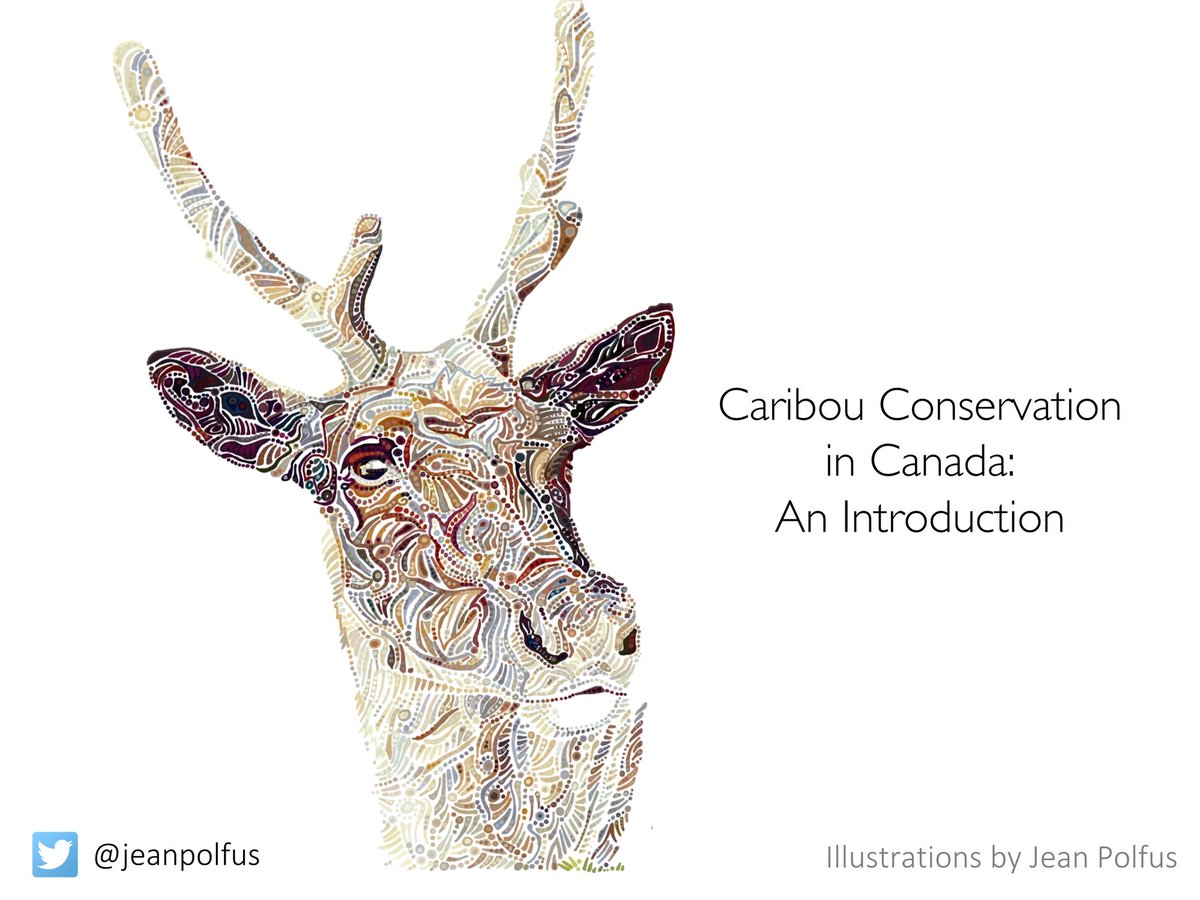

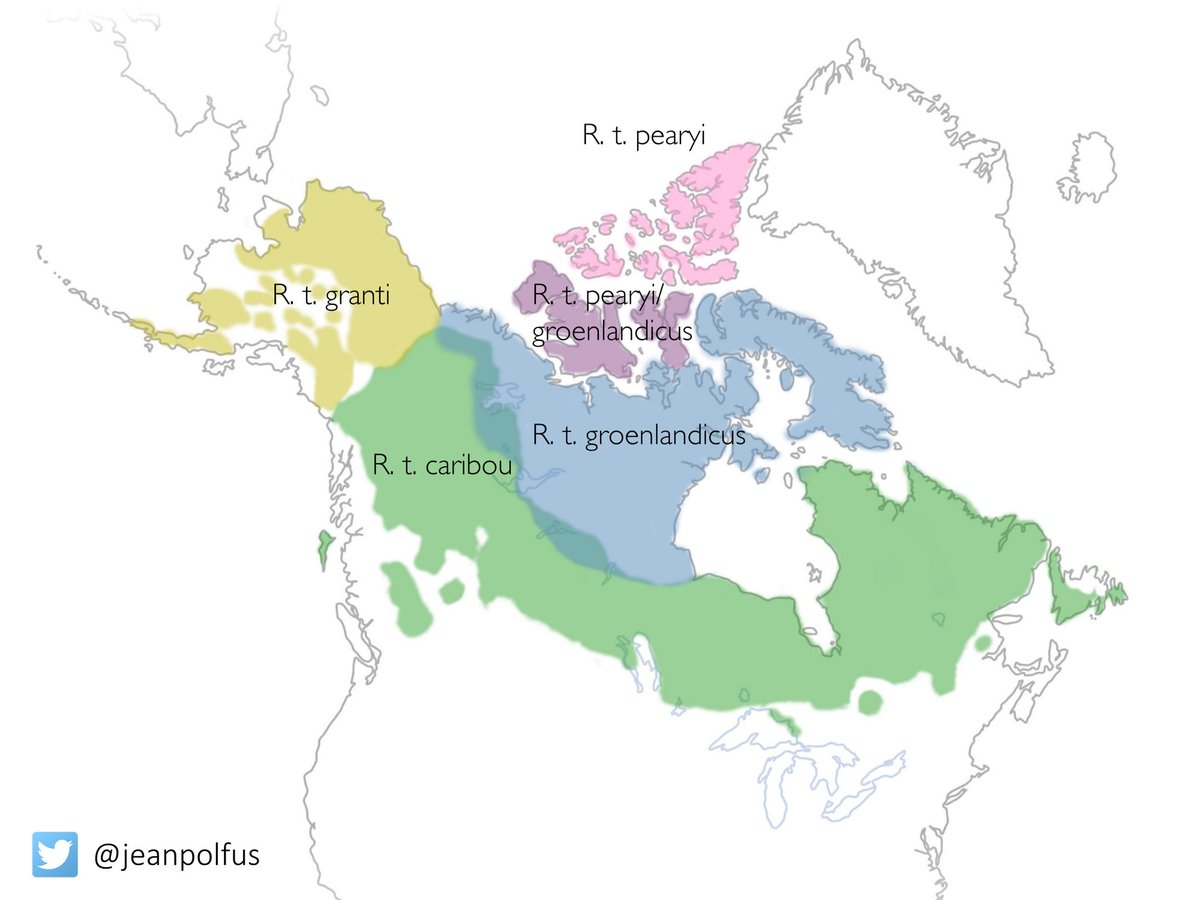

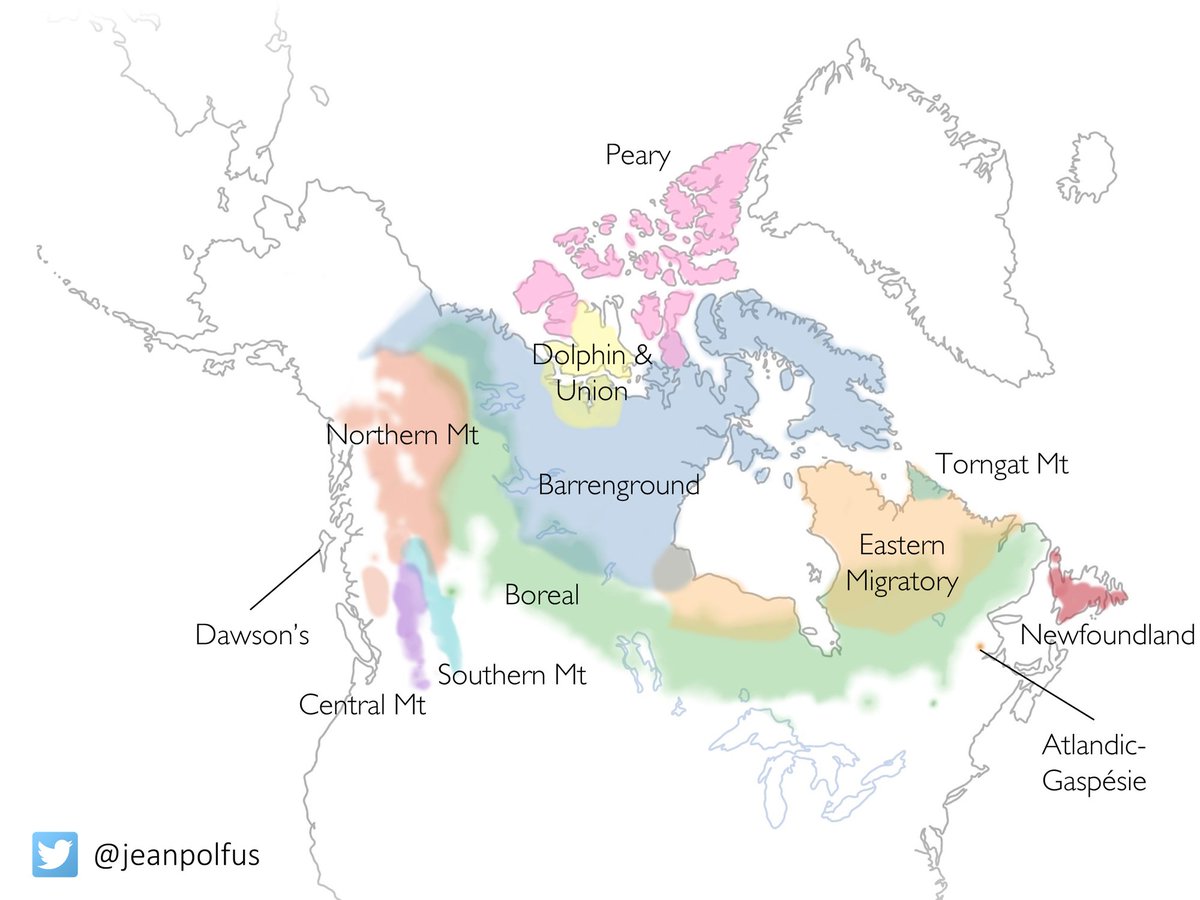
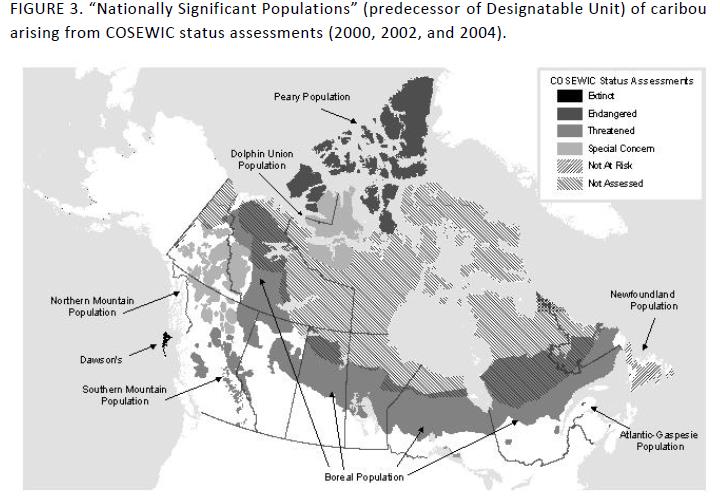

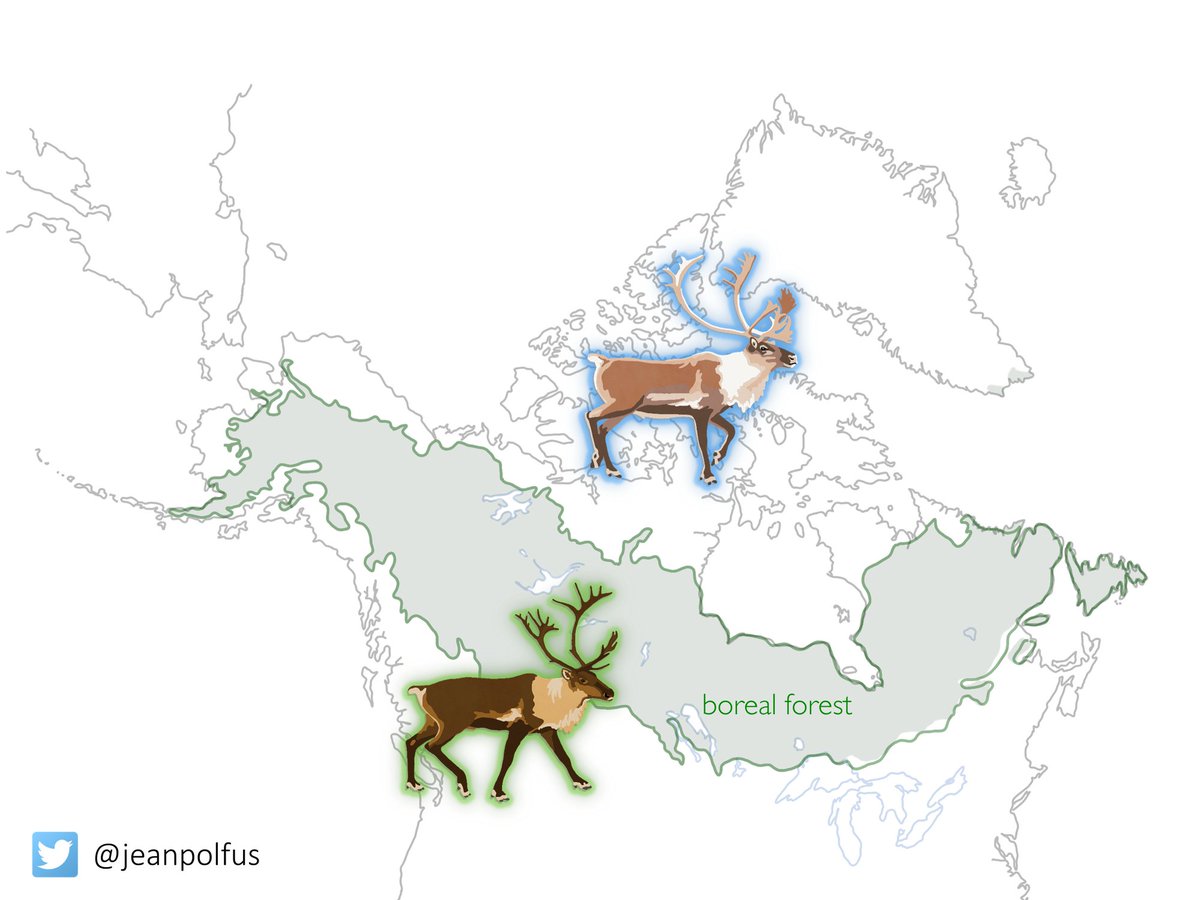
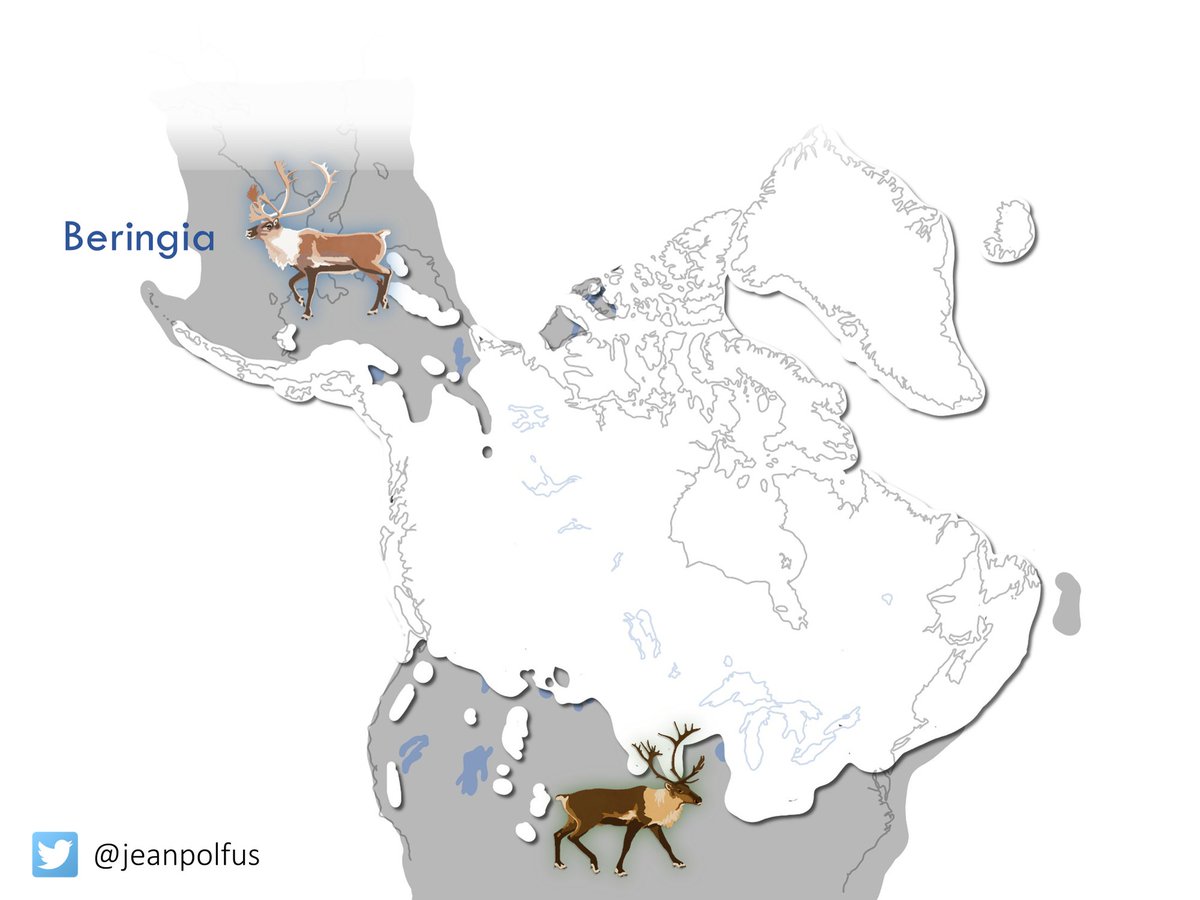
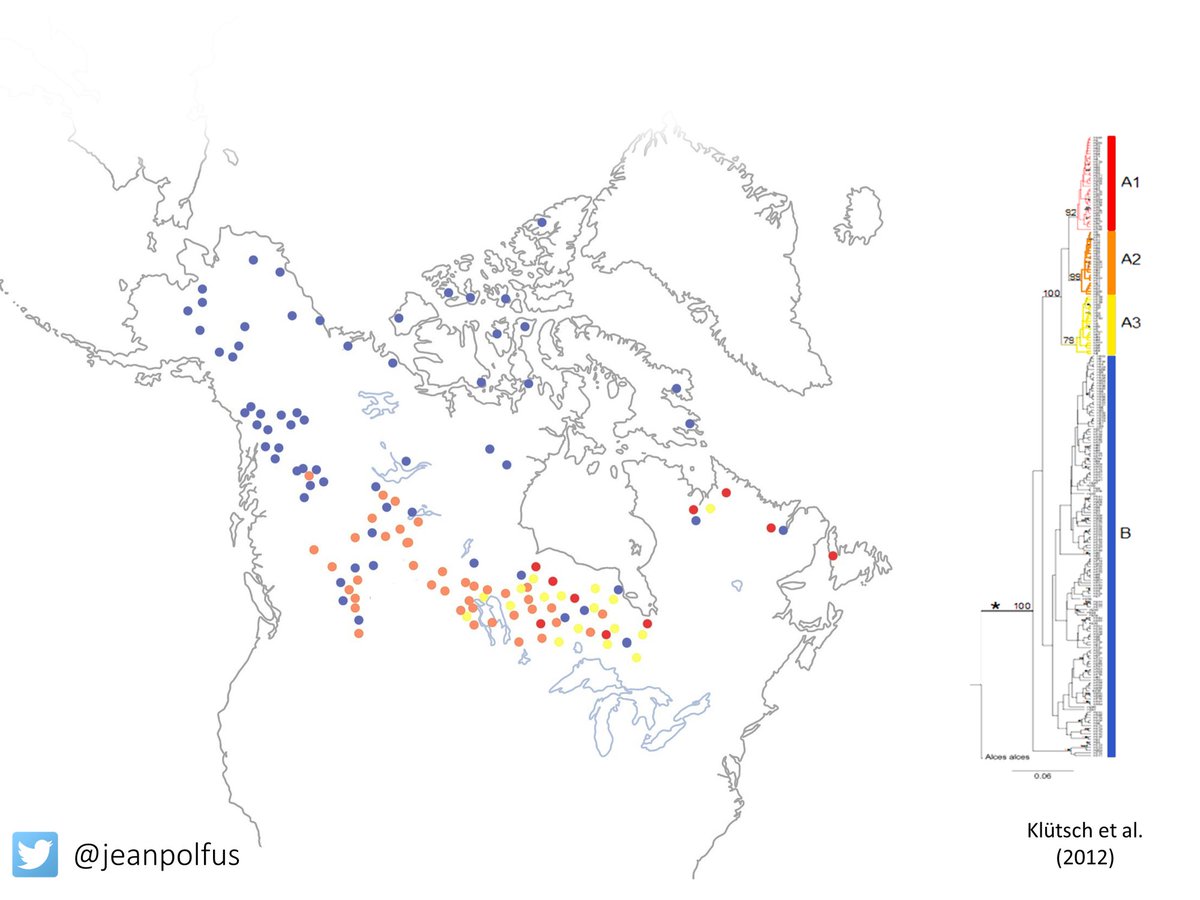

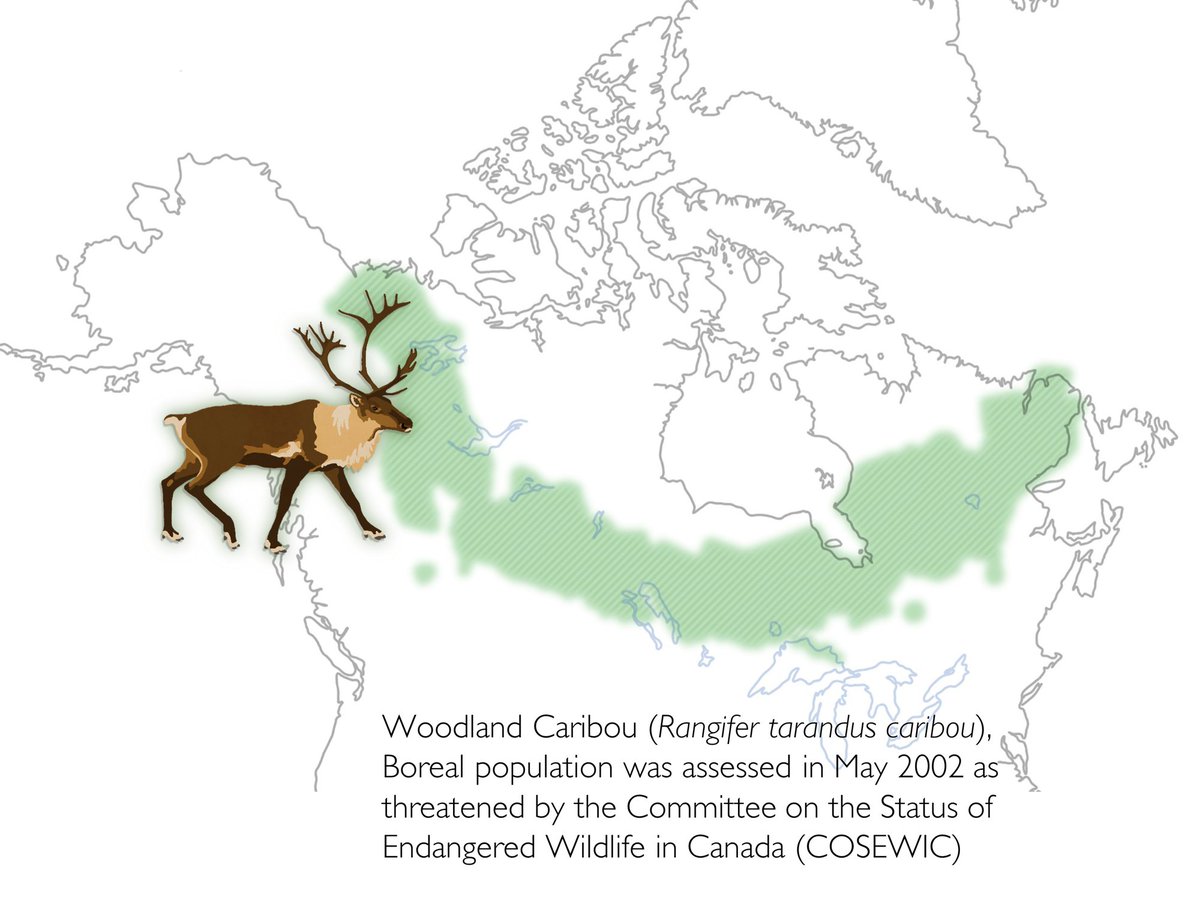
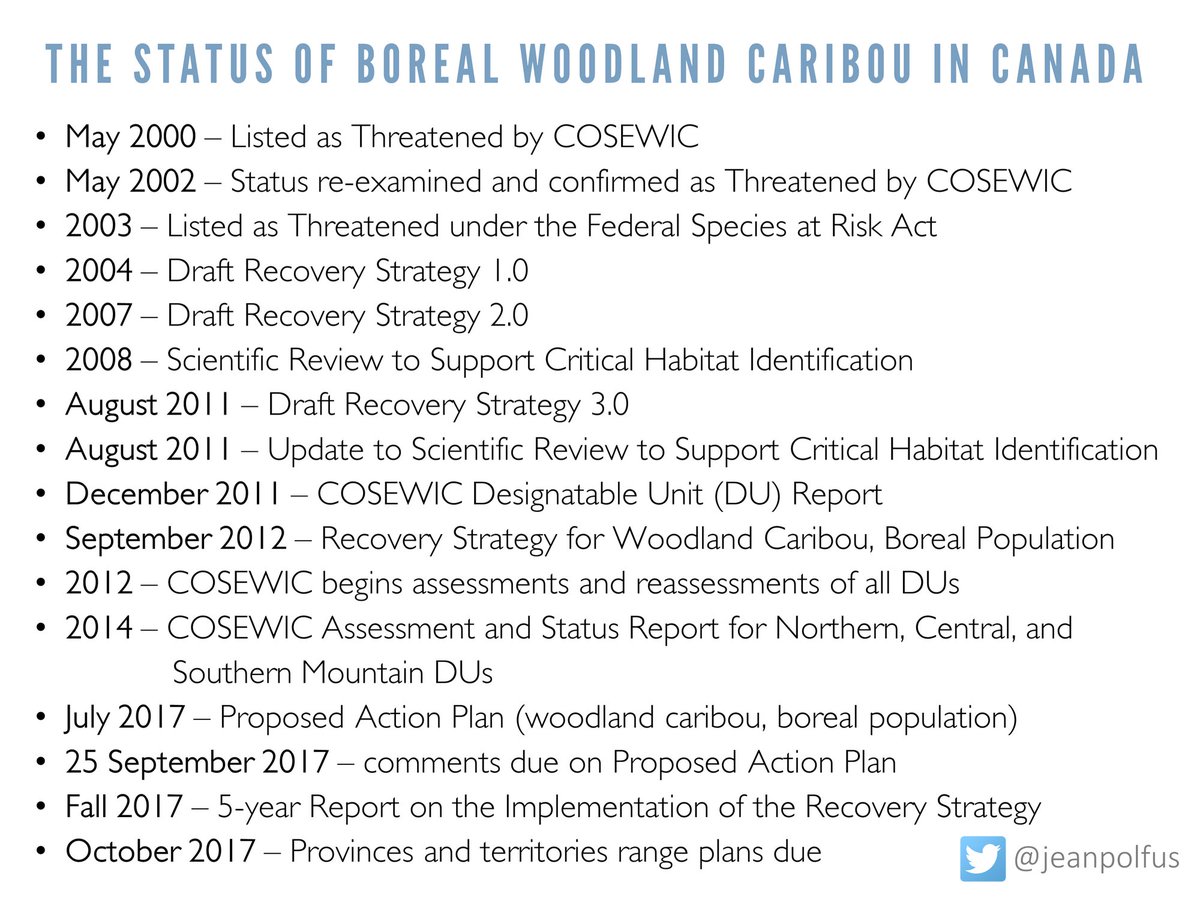
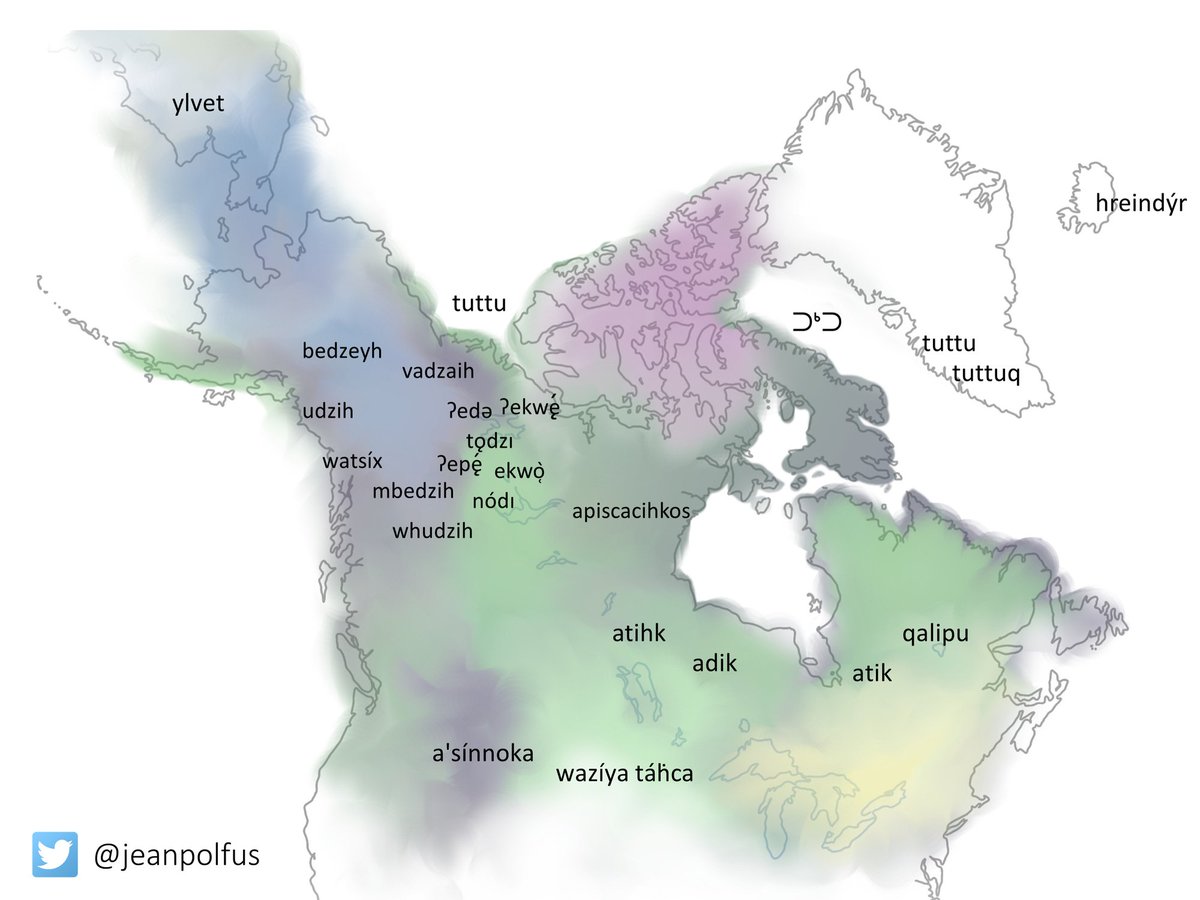 peoples of Canada developed robust classifications & language to describe #caribou. This knowledge is as valid as the attempts to classify the species by taxonomists, geneticists, & naturalists and can teach us so much (15/). See: https://www.ecologyandsociety.org/vol21/iss..." title="Of course, #Indigenous https://abs.twimg.com/hashflags... draggable="false" alt=""> peoples of Canada developed robust classifications & language to describe #caribou. This knowledge is as valid as the attempts to classify the species by taxonomists, geneticists, & naturalists and can teach us so much (15/). See: https://www.ecologyandsociety.org/vol21/iss..." class="img-responsive" style="max-width:100%;"/>
peoples of Canada developed robust classifications & language to describe #caribou. This knowledge is as valid as the attempts to classify the species by taxonomists, geneticists, & naturalists and can teach us so much (15/). See: https://www.ecologyandsociety.org/vol21/iss..." title="Of course, #Indigenous https://abs.twimg.com/hashflags... draggable="false" alt=""> peoples of Canada developed robust classifications & language to describe #caribou. This knowledge is as valid as the attempts to classify the species by taxonomists, geneticists, & naturalists and can teach us so much (15/). See: https://www.ecologyandsociety.org/vol21/iss..." class="img-responsive" style="max-width:100%;"/>
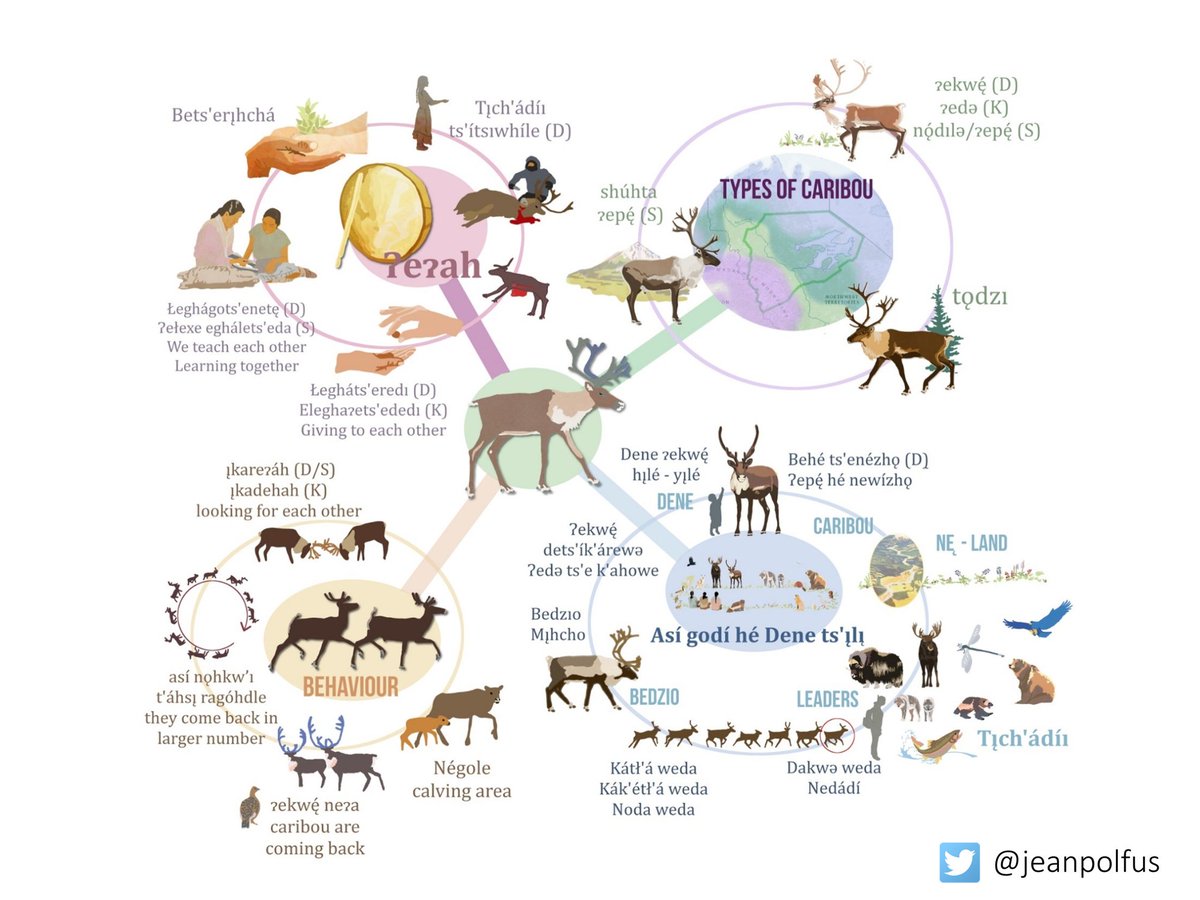 people, #Indigenouslanguages & #IndigenousKnowledge we will be able to clarify & strengthen our representations of #caribou variation and diversity (16/). See: https://www.ecologyandsociety.org/vol22/iss..." title="By acknowledging the distinct cultural diversity of #Indigenous https://abs.twimg.com/hashflags... draggable="false" alt=""> people, #Indigenouslanguages & #IndigenousKnowledge we will be able to clarify & strengthen our representations of #caribou variation and diversity (16/). See: https://www.ecologyandsociety.org/vol22/iss..." class="img-responsive" style="max-width:100%;"/>
people, #Indigenouslanguages & #IndigenousKnowledge we will be able to clarify & strengthen our representations of #caribou variation and diversity (16/). See: https://www.ecologyandsociety.org/vol22/iss..." title="By acknowledging the distinct cultural diversity of #Indigenous https://abs.twimg.com/hashflags... draggable="false" alt=""> people, #Indigenouslanguages & #IndigenousKnowledge we will be able to clarify & strengthen our representations of #caribou variation and diversity (16/). See: https://www.ecologyandsociety.org/vol22/iss..." class="img-responsive" style="max-width:100%;"/>

 language & knowledge systems will help inform the description of impressive variation found in #reindeer & #caribou (18/)." title="Rethinking the global classification of Rangifer tarandus is going to take collaboration btw the entire circumpolar Arctic research community. #Indigenous https://abs.twimg.com/hashflags... draggable="false" alt=""> language & knowledge systems will help inform the description of impressive variation found in #reindeer & #caribou (18/)." class="img-responsive" style="max-width:100%;"/>
language & knowledge systems will help inform the description of impressive variation found in #reindeer & #caribou (18/)." title="Rethinking the global classification of Rangifer tarandus is going to take collaboration btw the entire circumpolar Arctic research community. #Indigenous https://abs.twimg.com/hashflags... draggable="false" alt=""> language & knowledge systems will help inform the description of impressive variation found in #reindeer & #caribou (18/)." class="img-responsive" style="max-width:100%;"/>
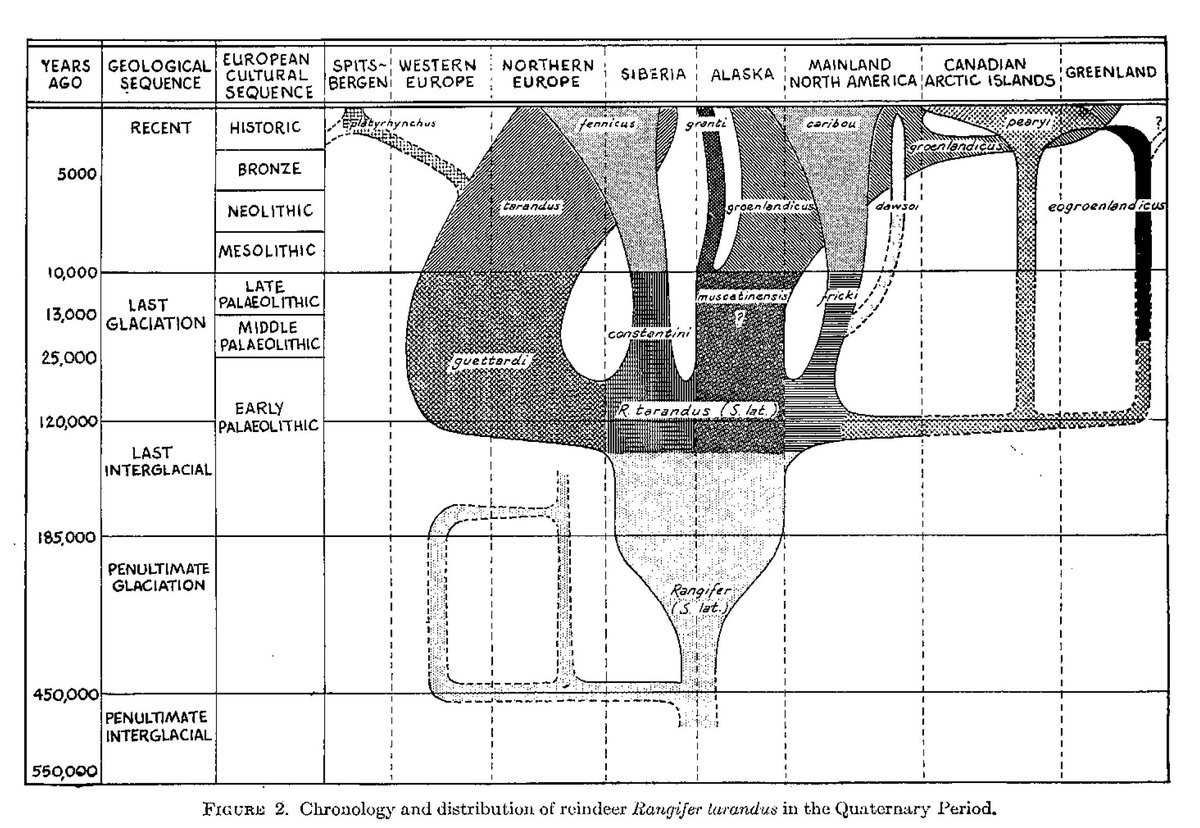
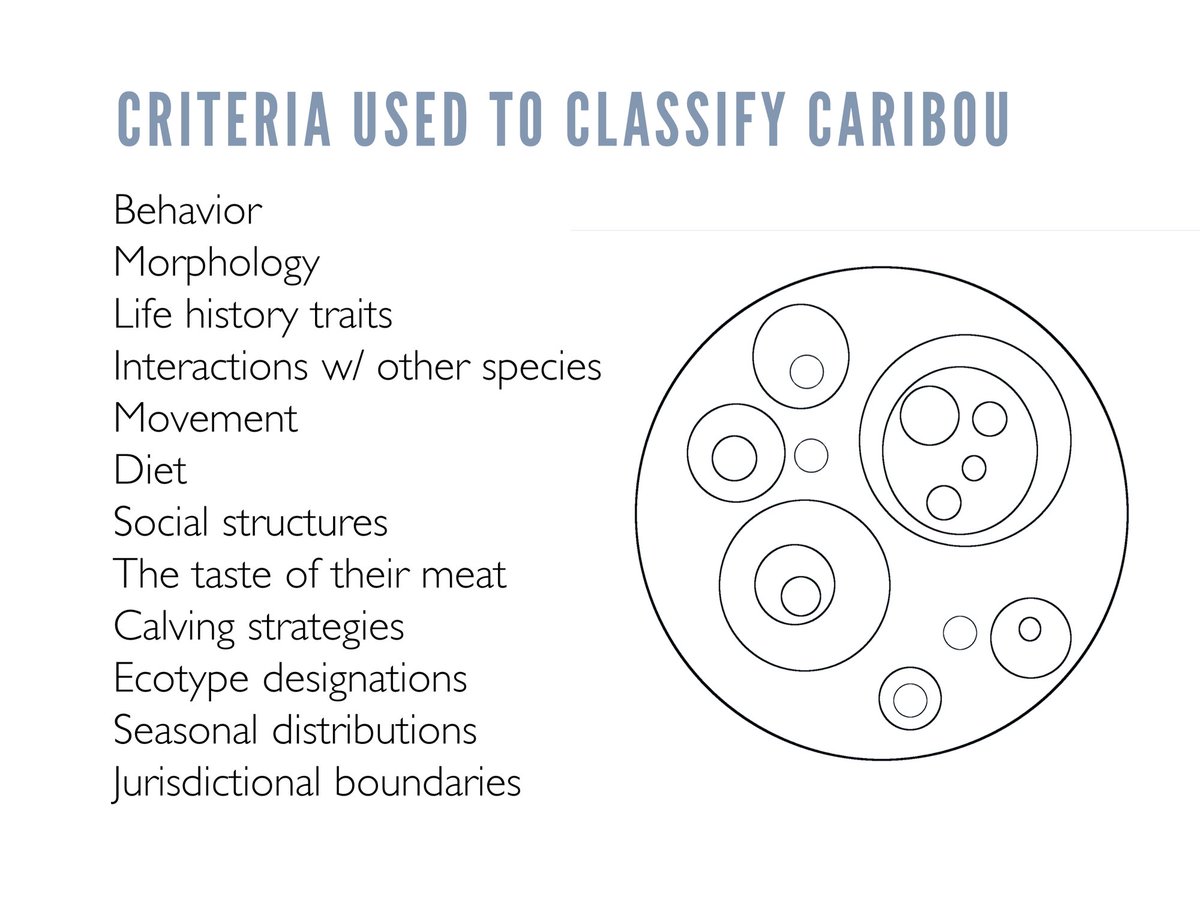
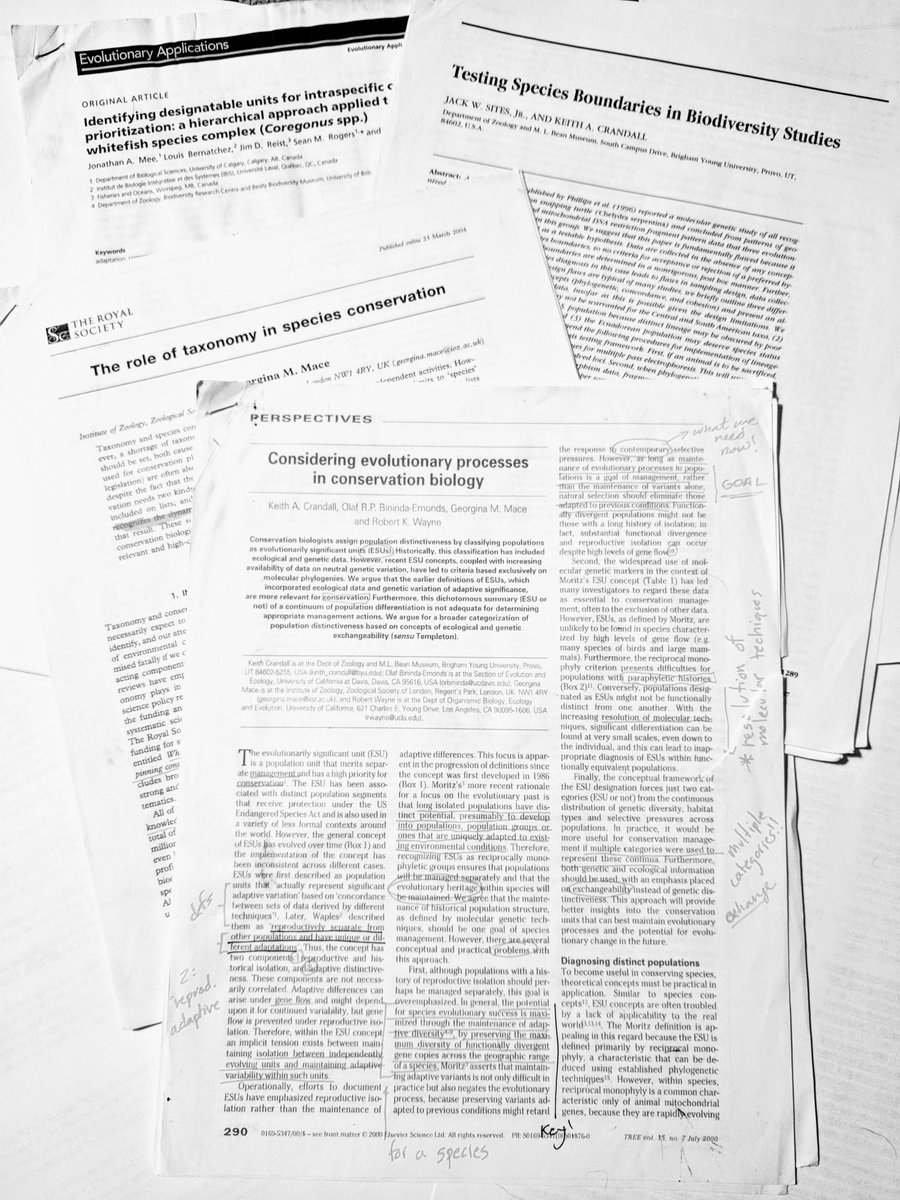
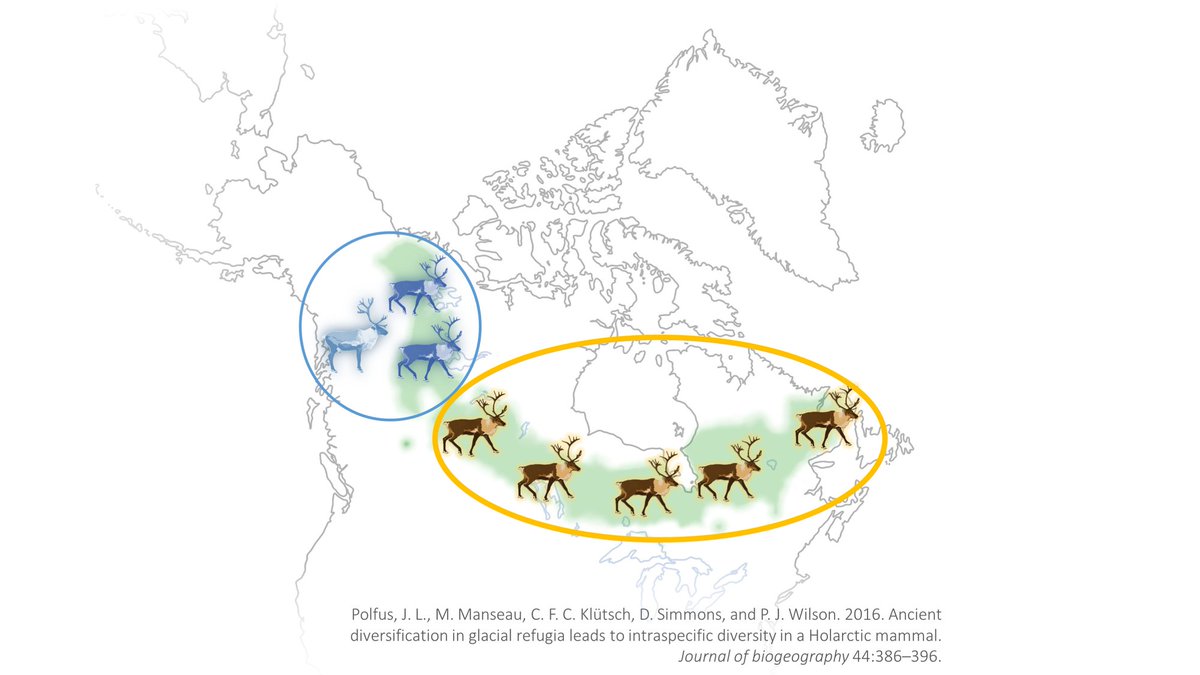
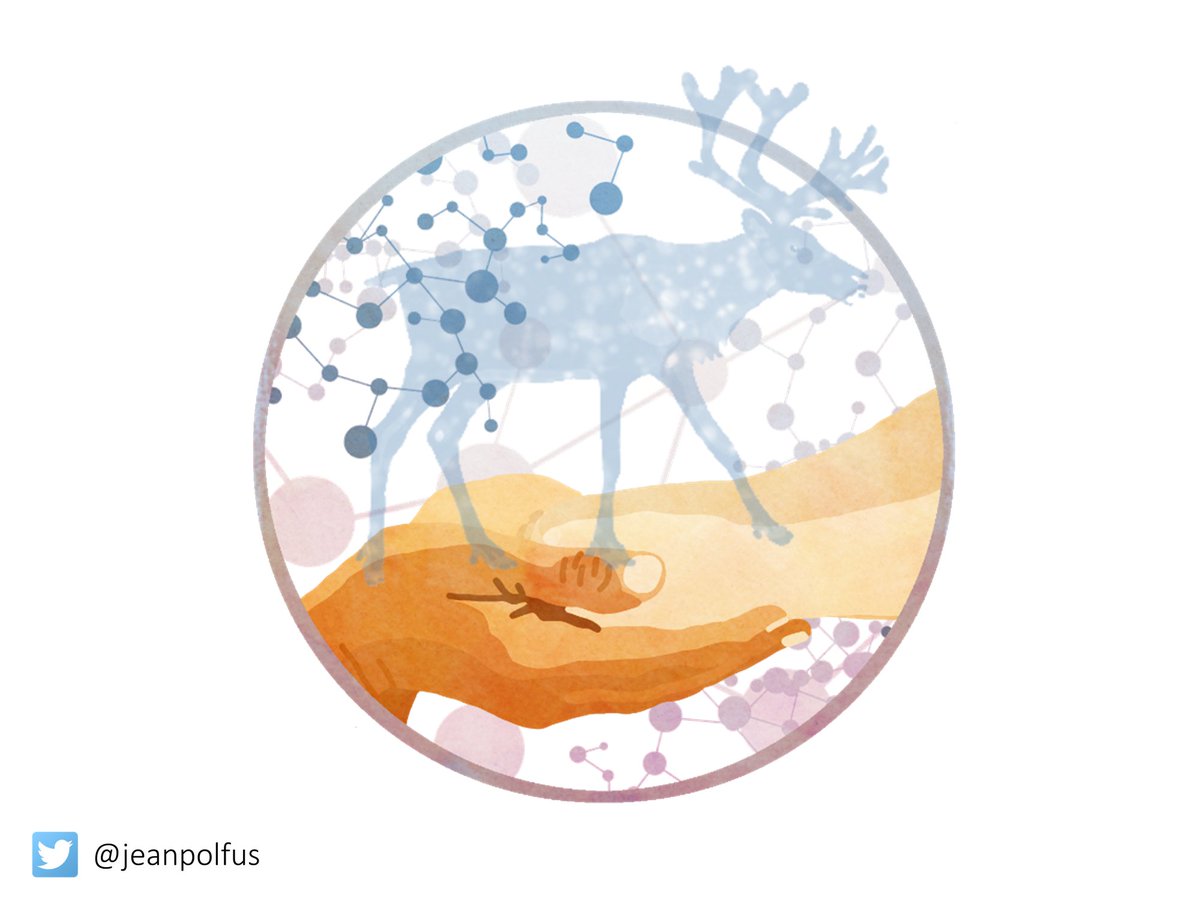 knowledge may be better suited to conserving caribou (24/)" title="Reliably interpreting genetic or ecological criteria for designating #caribou units remains subjective. A more integrative approach that takes into account meta-pop dynamics, eco-evolutionary processes & #Indigenous https://abs.twimg.com/hashflags... draggable="false" alt=""> knowledge may be better suited to conserving caribou (24/)" class="img-responsive" style="max-width:100%;"/>
knowledge may be better suited to conserving caribou (24/)" title="Reliably interpreting genetic or ecological criteria for designating #caribou units remains subjective. A more integrative approach that takes into account meta-pop dynamics, eco-evolutionary processes & #Indigenous https://abs.twimg.com/hashflags... draggable="false" alt=""> knowledge may be better suited to conserving caribou (24/)" class="img-responsive" style="max-width:100%;"/>


